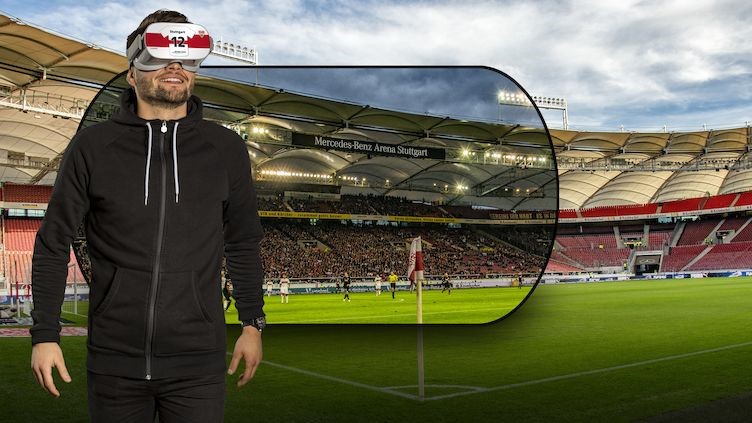Stadiums, arenas, and amphitheaters are some of the most demanding environments for Wi-Fi® deployments. Specific challenges include an extremely high number of client devices (ultra-high-density), device diversity (e.g., smartphones, and Augmented Reality/Virtual Reality (AR/VR) glasses/helmets), high-bandwidth per client data consumption and unique physical, RF deployment obstacles (e.g., stadium bowls/mid-to-upper-level seating). Beyond the technical challenges, stadium-grade Wi-Fi must support a wide range of critical internal operations such as wayfinding, ticketing, concessions, merchandise and parking systems.
Venue owners know that to get fans from their couches and into a stadium requires a truly interactive and compelling experience. In order to attract fans, stadiums are investing heavily to meet heightened expectations that deliver a different experience from that of the home, such as support for personalized instant video replays and live-stream selfies.
Branded stadium apps support 4K-ready video replays captured by multiple cameras with comprehensive viewing angles – all supported by in-venue, stadium-grade networks. These include on-field cameras, such as those the referees wear, as well as other cameras providing overhead and player-perspective views that stream, multi-cast and unicast live feeds to fans. Spectators in upper level seating now have a virtual view from the front row that provides a richer experience and enables the venue and teams to more effectively sell upper-bowl seats. This virtual experience offers the best of both worlds to fans by allowing them to feel like they are in the middle of the action (albeit at a more inexpensive price point) with panoramic, front-row views.
To enhance eSports events and visitor experiences, venues are also providing both real-time and static content to fans with sophisticated AR/VR headsets. For example, an empty stadium does not offer either a compelling or realistic ‘feel’ for what a game day experience is like. As such, the Mercedes-Benz arena in Stuttgart uses AR headsets to simulate the game day experience for schoolchildren and others touring the stadium. With the headsets, visitors can see cheering fans and virtually high-five the players as they run through the tunnel.

Image Credit: VfB Stuttgart
Deploying Wi-Fi in stadiums is challenging. High client counts drive higher access point (AP) density, but higher AP densities intensify self-interference and channel deployment complexity and challenges. Wi-Fi 6 benefits the stadium and venue experience because it improves spectral efficiency, channel utilization, and performance for Wi-Fi devices with a number of technologies such as OFDMA, UL-MU-MIMO, 1024-QAM and more. Put simply, Wi-Fi 6 access points utilize spectrum more efficiently and enables higher capacity in the same spectrum allocation, while also increasing performance for devices in ultra-dense venues such as stadiums.
As Robert Rice, VP of IT of Providence Park with the Portland Timbers recently noted, a new generation of CommScope Ruckus Wi-Fi 6 access points has helped the venue bolster coverage in the VIP area of the expanded stadium.
“The new APs have helped to create a more immersive and interactive fan experience by supporting the smooth streaming of HD and 4K video,” says Rice. “We look forward to deploying Ruckus Wi-Fi CERTIFIED 6™ R750 access points throughout Providence Park.”
The statements and opinions by each Wi-Fi Alliance member and those providing comments are theirs alone, and do not reflect the opinions or views of Wi-Fi Alliance or any other member. Wi-Fi Alliance is not responsible for the accuracy of any of the information provided by any member in posting to or commenting on this blog. Concerns should be directed to info@wi-fi.org.




Add new comment